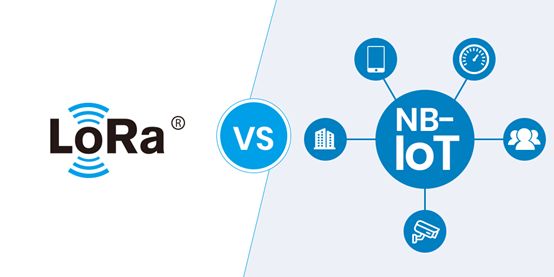

 咨询热线 15388025079
咨询热线 15388025079 时间:2022-01-01 19:02:20 浏览量:811
Analyze NB-IOT Narrowband Internet of Things What is NB-IOT technology
Narrowband Internet of Things (NB-IoT) technology is widely used in agriculture, industry, government and life. So what is the architecture diagram of Narrowband Internet of Things (NB-IoT) technology? A typical NB-IoT architecture has three layers, which are Perception layer, network layer, application layer.
Narrowband Internet of Things
Narrowband Internet of Things (NB-IoT) technology perception layer: It consists of various sensors, including temperature and humidity sensors, QR code tags, RFID tags and readers, cameras, infrared, GPS and other perception terminals. The perception layer is the source of the Internet of Things to identify objects and collect information. If you compare NB-IoT to humans, the perception layer is the sense organs such as eyes, nose, ears, and skin.
Narrowband Internet of Things (NB-IoT) technology network layer: It is composed of various networks, including the Internet, broadcasting network, network management system, and cloud computing platform. It is the center of the entire Internet of Things and is responsible for transmitting and processing information obtained by the perception layer. The network layer of the Narrowband Internet of Things is equivalent to the human nervous system and transmits various signals.
The Narrowband Internet of Things (NB-IoT) technology application layer is the interface between the Internet of Things and users. It combines with industry needs to realize the intelligent application of the Internet of Things. The application layer of the Internet of Things is equivalent to the human brain, responsible for analyzing and processing various data.

NB-IOT features:
1, the frequency spectrum is narrow: 200kHz;
2, repeated transmission of the same data packet can also obtain better coverage gain;
3. In addition, this technology reduces the activation ratio of the terminal and reduces the complexity of the terminal baseband;
4. Four NB-IOT capabilities: wide coverage, massive connections, lower power consumption, and lower chip cost;
5. The terminal transmitting narrowband signals increases the power spectral density of the signal, increases the coverage gain of the signal, and improves the efficiency of spectrum utilization;
6. NB-IOT is based on the technology of the existing cellular network and can quickly support the industry market demand by upgrading the existing network, becoming the fourth mode on the GUL network.
NB-IoT advantage
(1) Strong link
In the case of the same base station, NB-IoT can provide 50-100 times the number of accesses than existing wireless technologies. A sector can support 100,000 connections, support low latency sensitivity, low device power consumption and optimized network architecture.
(2) Wide coverage
NB-IoT has strong indoor and basement coverage. Compared with LTE, the gain is increased by 20dB, which is equivalent to an increase of 100 times the coverage area capacity. Not only can it meet the wide coverage requirements in rural areas, but it is also suitable for applications that require deep coverage such as factories, underground garages, and manhole covers. Take manhole cover monitoring as an example. In the past, the GPRS method needed to extend an antenna, and the vehicle traffic was easily damaged. As long as NB-IoT is properly deployed, this problem can be solved. Zhongshan Technology has solved this problem in smart manhole cover monitoring. Solutions, and provide equipment and solutions for multiple cities.
(3) Low power consumption
Low power consumption is an important indicator requirement for IoT applications, especially for equipment and occasions where batteries cannot be replaced frequently, such as various sensing and monitoring equipment placed in remote areas of high mountains and wilderness, and power and voltage monitoring equipment. It may be like a smart phone that is charged once a day, so a battery life of several years is the most essential requirement. NB-IoT focuses on small data volume and low-rate applications, so the power consumption of NB-IoT devices can be very small, and the battery life of the device can be greatly increased from the past few months to several years.
(4) Low cost
Compared with LoRa, NB-IoT does not need to rebuild the network, and the radio frequency and antenna are basically multiplexed. Taking China Mobile as an example, there is a relatively wide frequency band in 900MHZ, and only a part of the 2G frequency band needs to be cleared, and LTE and NB-IoT can be deployed directly at the same time. Low speed, low power consumption, and low bandwidth also bring low-cost advantages to NB-IoT chips and modules. The expected price of the module will not exceed US$5, and the current module price of the center is 36 yuan including tax.
NB-IOT network interface and protocol stack
CoAP (Constrained ApplicaTIon Protocol) is a protocol specially designed by IETF for restricted application environments. It is similar in function to HTTP, but is lighter and more efficient than HTTP, and is suitable for NB-IoT terminals.
The UE directly communicates with the IoT platform or M2M APP Server through the CoAP protocol to carry application layer data. When the M2M APP server supports the CoAP protocol, the business data can be passed through the IoT platform. The DTLS protocol is optional and supports when end-to-end security is required.
上一页:Application and function introduction of industrial intelligent gateway
下一页:Classification and application of wireless communication modules
相关推荐
相关产品